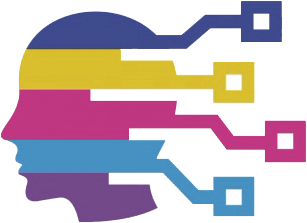OpenAI has unveiled pivotal changes to its AI model development roadmap, notably canceling the anticipated release of its o3 model in favor of a newly envisioned approach. This strategic pivot, articulated by CEO Sam Altman, sets the stage for a more integrated product offering with the upcoming GPT-5 model. The implications of this shift ripple through the AI community, ushering in discussions about model complexity, user experience, and the future trajectory of AI technologies.
The decision to cancel o3, once touted as a major leap forward for OpenAI, raises eyebrows and questions regarding the company’s priorities. Initially announced for a potential launch in early 2023, o3 was expected to enhance OpenAI’s suite of AI models with cutting-edge capabilities. However, as industry timelines and expectations pulled in different directions, the call to consolidate offerings into GPT-5 has clearly been driven by the need for simplification.
In his post on X, Altman emphasized a commitment to simplifying their product landscape, aiming to reduce the confusion associated with the numerous model choices currently available. This shift reflects an understanding that ease of use is crucial for adoption and user satisfaction. The burgeoning complexity of AI models can often alienate users who lack the technical acumen necessary to navigate sophisticated systems.
Sam Altman’s announcement regarding GPT-5 underscores an ambition to unify OpenAI’s technological innovations. By integrating various functionalities previously scattered across multiple models, including chat interactions, voice processing, and deep research capabilities, GPT-5 promises a more harmonious user experience. This move highlights a significant trend in software design: the blending of diverse functionalities into a single, seamless interface, which can enhance user engagement and efficacy.
Access to GPT-5 will be tiered, allowing subscribers of the different ChatGPT service levels to operate the model at varying intelligence settings. This model, with its multi-faceted capabilities, marks a shift from mere performance metrics to a broader vision of practicality and usefulness across varied tasks. However, the stipulation regarding “abuse thresholds” introduces additional layers of complexity, as it raises questions about how such thresholds will be implemented and regulated.
Before GPT-5’s debut, OpenAI intends to release the GPT-4.5 model, codenamed “Orion.” Careful consideration of reasoning models has gained momentum since OpenAI introduced o1, which incorporated self-fact-checking capabilities. The strategic intent behind Orion appears to reflect lessons learned from the shortcomings of prior models, particularly regarding reliability in complex problem-solving domains.
As Altman notes, trait differences stem from the models’ architectures and their inherent abilities to engage in deeper reasoning processes. This adroit adaptation might be crucial for OpenAI as it seeks to rectify the performance challenges associated with Orion, particularly as it stands at a juncture where competition, especially from players like DeepSeek and its versatile R1 model, is intensifying.
The competitive landscape of AI development continues to evolve rapidly, with companies like DeepSeek emerging as formidable rivals to OpenAI. The contrasting strategies—DeepSeek’s openness versus OpenAI’s proprietary focus—pose important questions about the future of AI innovation. Altman’s candid acknowledgment of the reduced gap in technological advancements signals a potential shift in strategy, perhaps hinting at future openness to collaboration or the adoption of alternative licensing models.
As OpenAI gears up to introduce its offerings, the overarching challenge lies in negotiating the delicate balance of innovation, user empowerment, and market competition. This newly revealed roadmap, while streamlining current offerings, invites scrutiny on whether these adaptations will adequately satisfy both consumer needs and a growing thirst for more advanced AI capabilities.
OpenAI’s recent strategic decisions, particularly the cancellation of o3 and the fervent development of GPT-5, represent a substantial evolution in how AI companies are positioning their products in a rapidly shifting landscape. As new models prepare to roll out, both industry insiders and consumers alike will be watching closely to assess whether these changes successfully align with user expectations and market demands. The coming months hold promise for a revitalized AI experience, yet the questions of performance, reliability, and user experience remain paramount as OpenAI navigates this complex journey.

